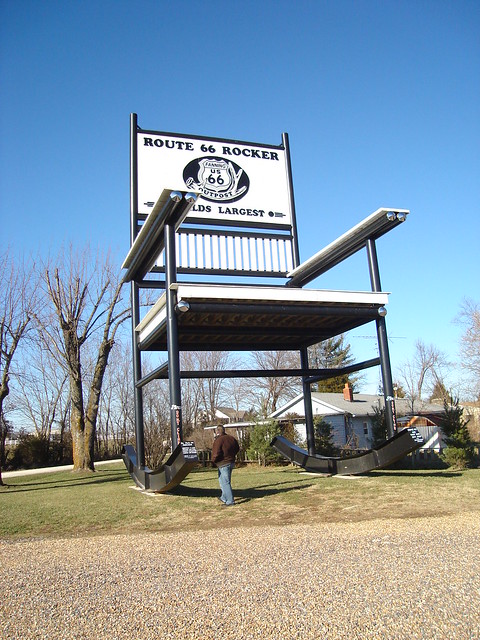So there’s this thing called Industrial Ecology
Do you remember episode 1, where I promised to answer the question: how to feed people without causing environmental destruction and depleting the world’s Phosphorus stocks?
…that was just my evil ploy to get you to read episode 2.
We all knew that was a little ambitious for one, single blog post, right?
I promise we will get there but, first, there are a few things that need explaining.
Judging by own general skepticism towards “get rich quick” schemes, “lose 10 kg in 5 days” plans and “I have the answer for ensuring that 4 billion people are fed” magic, I think it is essential to first explain IE and the tools we use for answering these big sustainability questions (such as the phosphorus problem) before concluding on solutions. You have to understand it to trust it, right?
And I’m guessing you have no idea what industrial ecology means.
I mean, honestly, those two words don’t even fit together, right?
So, let’s start there…What is Industrial Ecology (IE)?
From what I understand, there is no universal definition of Industrial Ecology [don’t quote me on that] but according to Tom Graedel, a godfather of IE, it is defined as:
“the study of technological organisms, their use of resources, their potential environmental impacts and the ways in which their interactions with the natural world could be restructured to enable sustainability.”
In other words, we study human activities – anything from manufacturing play-stations, eating hamburgers at McDonalds, driving Teslas to building gigantic, pointless rocking chairs – and how those activities affect the environment, people, etc.
Then, once we figure out how bad or good they are (we have tools for doing this), we look for ways to make them better. So let’s use the example of the very exciting and useful product, “handerpants.”

Yup, those are underpants for your hands. I’m still struggling to figure out their purpose and how they differ from gloves (?) but apparently, people buy (and wear) them. For example, this guy. Case in point..
If we think about the life cycle of these garments, it probably goes something like this: Get prepared for some pretty fancy clipart.

All along the supply chain of handerpants production, consumption and, finally, waste treatment, there are resources consumed and emissions generated to the environment.
Our job as industrial ecologists is to quantify those emissions (to reiterate – we have tools for this) and figure out how we can make this “human activity” more environmentally friendly by reducing its interaction with the environment.
The most obvious solution is to never produce the handerpants in the first place and wear gloves (like a normal person) instead…
But for arguments sake, perhaps one solution is recycling the handerpants into actual underpants and reusing the material.
However (!), you have to consider that there’s electricity and new materials to create the recycled underpants that also results in emissions to the environment. Overall, maybe the recycled underpants are worse for the environment than simply incinerating the handerpants?
It is these types of relationships that we study in order to find sustainable solutions that actually reduce our impact on the environment.
Exciting, I know.
It, of course, gets a lot more complicated than this. Our methods cover many products and range from the factory level all the way to assessing entire economies. That will take a lot more time to explain so we will conclude here.
Stay tuned for the next episode where I’ll attempt to explain IE tools and, in particular, the ones that I use to analyze phosphorus [yay! Finally back on topic!].
This blog post was originally posted on www.ntnutechzone.no on October 22nd 2015

Helen Ann Hamilton
Helen Ann Hamilton is a PhD candidate at NTNU – The Department of Energy and Process Engineering.
Search
Søk
Categories
- Arctic Research
- Arkitektur
- Bærekraft
- Bioingeniørfag
- Biologi
- Biology
- Biomedical Laboratory Science
- Biotechnology
- Bioteknologi
- Chemical Engineering
- Chemistry
- Climate
- Computer Science
- Datateknologi
- Digital
- Elektronikk
- Energi
- Energi
- Energy
- Engineering
- Engineering
- Environment
- Food Science
- Forskning
- Fysikk
- Fysikk
- Havbruk
- Informasjonsteknologi
- Informasjonsteknologi
- Ingeniørvitenskap
- Kjemi
- Kjemisk prosessteknologi
- Kjemisk prosessteknologi
- Kreftbehandling
- Kybernetikk
- Marine Technology
- Materialer
- Materials Science
- Materialteknologi
- Matvitenskap
- Meninger
- Miljø
- Min ph.d.
- My PhD
- My PhD
- My postdoc
- Nanotechnology
- Nanoteknologi
- Ocean
- Oil and gas
- Physics
- Research
- Simulering og visualisering
- Spør en forsker
- Studentliv
- Sustainability
- Ukategorisert
- Universitetsliv
- University Life
Kategorier
- Arctic Research
- Arkitektur
- Bærekraft
- Bioingeniørfag
- Biologi
- Biology
- Biomedical Laboratory Science
- Biotechnology
- Bioteknologi
- Chemical Engineering
- Chemistry
- Climate
- Computer Science
- Datateknologi
- Digital
- Elektronikk
- Energi
- Energi
- Energy
- Engineering
- Engineering
- Environment
- Food Science
- Forskning
- Fysikk
- Fysikk
- Havbruk
- Informasjonsteknologi
- Informasjonsteknologi
- Ingeniørvitenskap
- Kjemi
- Kjemisk prosessteknologi
- Kjemisk prosessteknologi
- Kreftbehandling
- Kybernetikk
- Marine Technology
- Materialer
- Materials Science
- Materialteknologi
- Matvitenskap
- Meninger
- Miljø
- Min ph.d.
- My PhD
- My PhD
- My postdoc
- Nanotechnology
- Nanoteknologi
- Ocean
- Oil and gas
- Physics
- Research
- Simulering og visualisering
- Spør en forsker
- Studentliv
- Sustainability
- Ukategorisert
- Universitetsliv
- University Life









